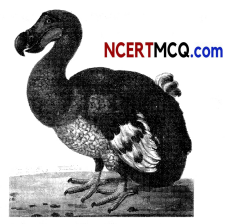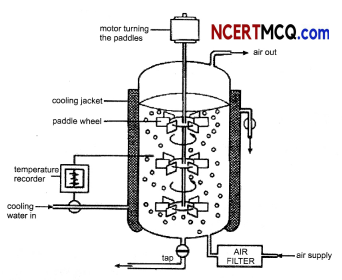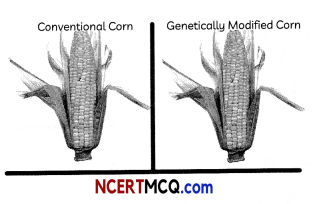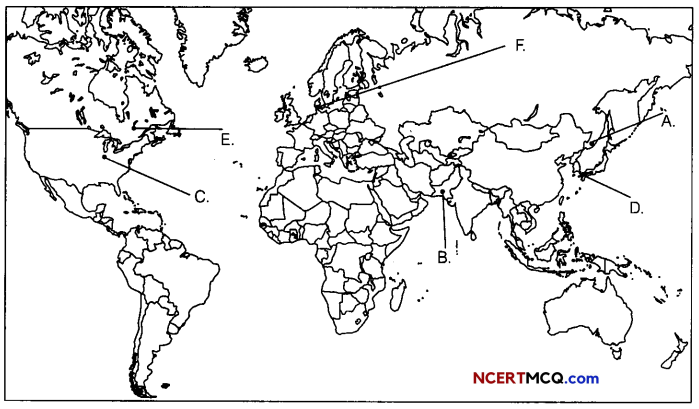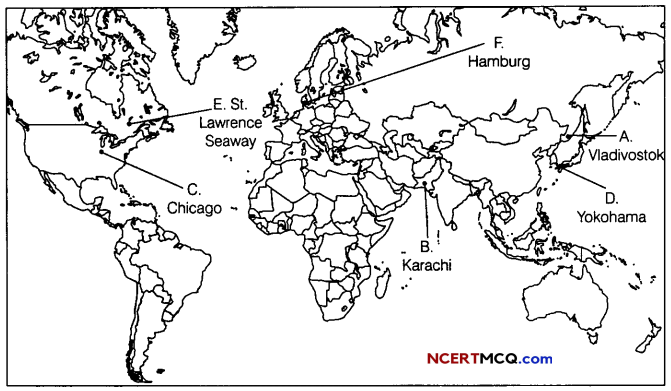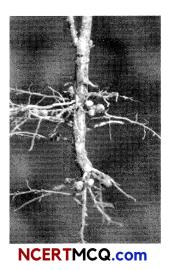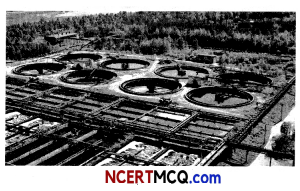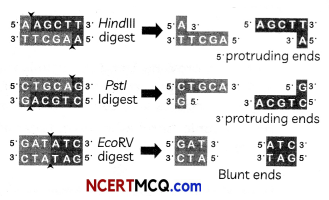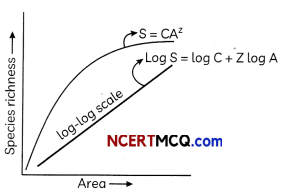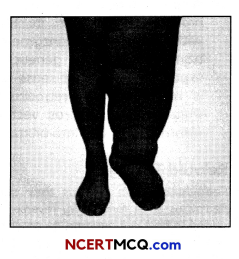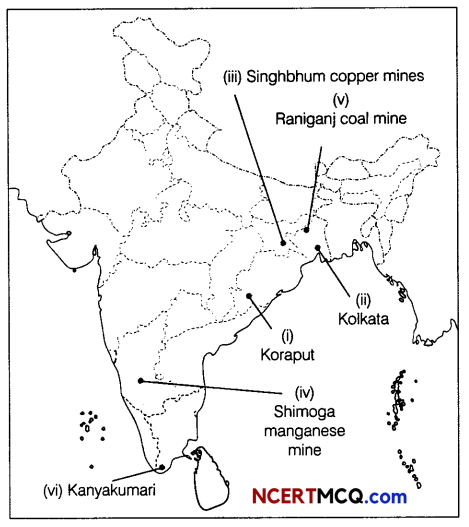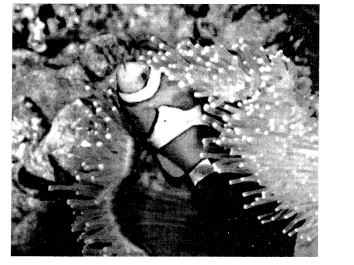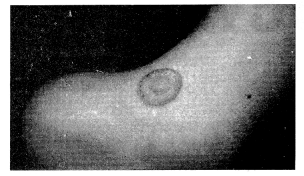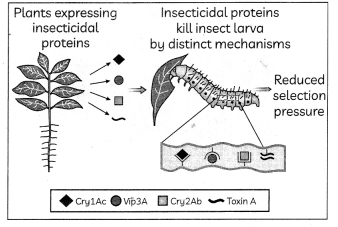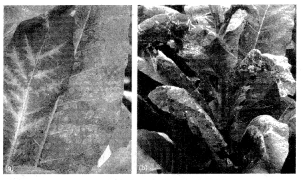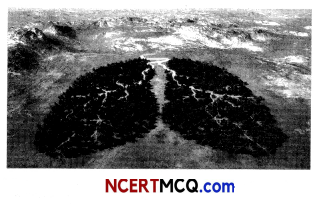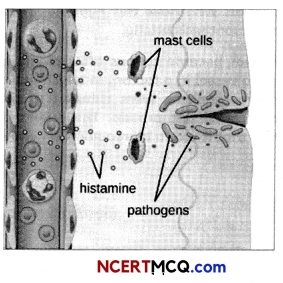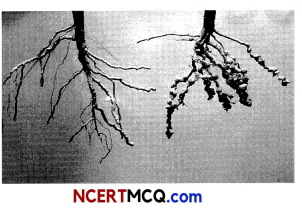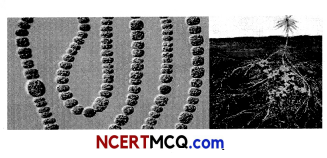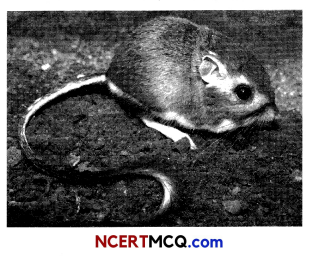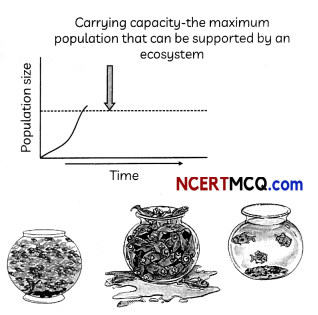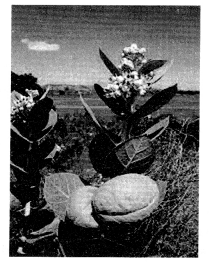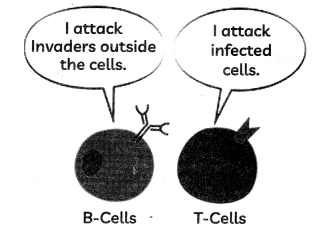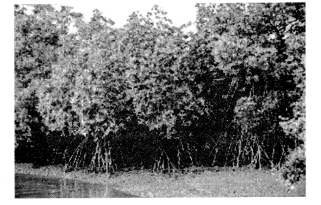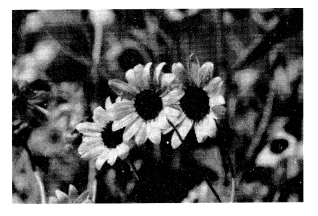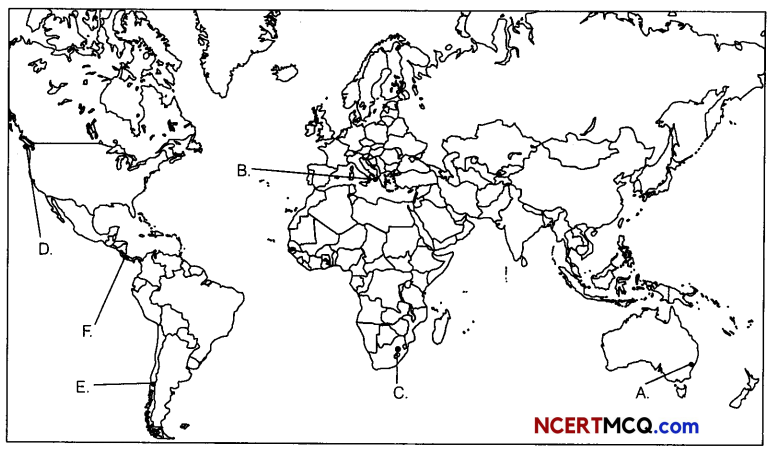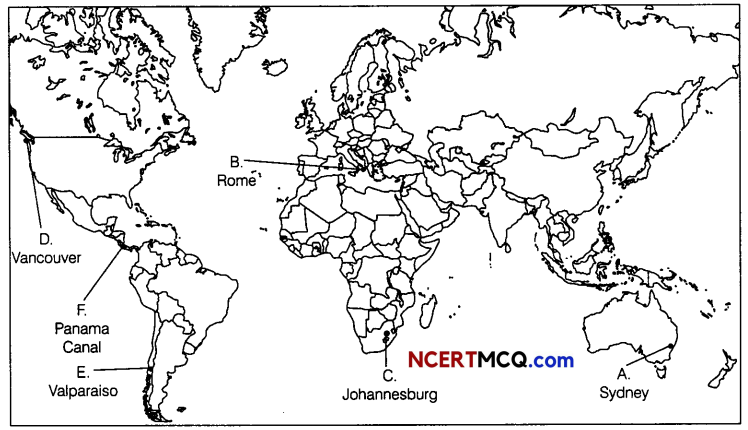Students can access the CBSE Sample Papers for Class 12 Hindi with Solutions and marking scheme Term 2 Set 6 will help students in understanding the difficulty level of the exam.
CBSE Sample Papers for Class 12 Hindi Term 2 Set 6 with Solutions
Time Allowed: 2 Hours
Ma×imum Marks: 40
सामान्य निर्देश :
- निम्नलिखित निर्देशों को बहुत सावधानी से पढ़िए और उनका पालन कीजिए:
- इस प्रश्न पत्र में वर्णनात्मक प्रश्न पूछे गए हैं।
- इस प्रश्न पत्र में कुल सात प्रश्न पूछे गए हैं। आपको सात प्रश्नों के उत्तर देने हैं।
- प्रश्नों में आंतरिक विकल्प भी दिए गए हैं। निर्देशानुसार उत्तर दीजिए।
कार्यालयी हिंदी और रचनात्मक लेखन [20 अंक]
प्रश्न 1.
निम्नलिखित दिए गए तीन शीर्षको में से किसी एक शीर्षक का चयन कर लगभग 200 शब्दों में एक रचनात्मक लेख लिखिए: (5 × 1 = 5)
(क) नैतिकता का पतन : मानवता का पतन
उत्तरः
नैतिकता का पतन : मानवता का पतन:
नैतिकता और मानवता का अटूट संबंध है। मानवता को बनाने के लिए जो नीतियाँ होती हैं वही नैतिकता कहलाती हैं। अतः जो कार्य मानवता के विरुद्ध होगा वह कभी भी नैतिक नहीं हो सकता। अतः नैतिकता को ही मानवता की उपज कहा जा सकता है। आज धीरे-धीरे मानवता संकुचित होती जा रही है। वर्तमान में लोग स्वार्थी होते जा रहे हैं। उनका स्वार्थ इतना अधिक बढ़ता जा रहा है कि उसे सिद्ध करने के लिए वह अपने पारिवारिक और सामाजिक संबंधों से दूर होते जा रहे हैं। फलस्वरूप वे अकेले होते जा रहे हैं। आजकल लोग अपने काम से काम रखते हैं, भावुकता के स्थान पर वे सिद्धांतवादी होते जा रहे हैं। आज ‘हम’ का स्थान ‘मैं’ ने ले लिया है।
लोगों पर यह सोच हावी होती जा रही है कि देश का चाहे कुछ हो, पर मेरा भला होना चाहिए | माता-पिता का भी आज यही एकमात्र उद्देश्य है कि उनका बच्चा धन-संपत्ति कमाकर धनवान हो जाए भले ही उसमें संस्कार नाममात्र के लिए भी न हों। शिक्षा व्यवस्था इस प्रकार की है जो बच्चे को रोजगार तो दिलाती है पर उसे चरित्रवान नहीं बनाती। वास्तव में आज चारों ओर अंधकार-सा छा गया है। आज जरूरत है इस अन्धकार से बाहर आकर प्रकाश की ओर जाने की। मानवतावादी दृष्टिकोण को अपना कर हम अपनी नैतिकता को बचा सकते हैं और एक स्वस्थ राष्ट्र का निर्माण कर सकते हैं।
(ख) बुजुर्गों की समस्या
उत्तरः
बुजुर्गों की समस्या:
भारतीय संस्कृति में बुजुर्गों को पूजनीय और सम्मानीय स्थान प्राप्त है। आज आधुनिकता की अंधी दौड़ में उनका वह स्थान उनसे दूर होता जा रहा है। आज उन्हें घर में कोई भी नहीं पूछता। आज तो स्थिति यह हो गई है कि जब तक वे पैसा कमाते हैं, तब तक तो उनकी बड़ी पूछ होती है और सेवानिवृत्ति के बाद उनसे बात तक भी नहीं की जाती। अब घर में उनका स्थान फालतू सामान के समान हो जाता है। उनके हर काम में मीनमेख निकालना, उनसे घर के फालतू काम करवाना, बस यही उनकी नियति बन जाता है। कुछ लोग तो इतने गिर जाते हैं कि बुजुर्गों को खाना खिलाना भी उन्हें भार लगने लगता है। वे उनसे आदरपूर्वक बात करना, उन्हें अपने मित्रों से मिलाना भी अपनी शान के खिलाफ समझते हैं। वे ये भूल जाते हैं कि अपनी इन्हीं संतानों का परिचय अपने मित्रों से करवाते समय इन्हीं बुजुर्गो का सीना शान से चौड़ा हो जाता था। बुजुर्ग घर के मुखिया होते हैं। वास्तव में बुजुर्ग हमारे मार्गदर्शक होते हैं क्योंकि उन्हें जीवन जीने का अनुभव हमसे अधिक होता है। वे अपने बच्चों को उंगली पकड़कर चलना सिखाते हैं और बड़े होने पर उनके पथप्रदर्शक हो जाते हैं। अतः हमें उनका मान-सम्मान करना चाहिए और उनकी सेवा करनी चाहिए।
(ग) पुस्तकें पढ़ने की आदत
उत्तरः
पुस्तकें पढ़ने की आदत ।
किसी ने सच ही कहा है कि पुस्तकें मनुष्य की सच्ची मित्र होती हैं। मित्र भले ही हमारा साथ छोड़ दे पर पुस्तकें आजीवन ही हमारा साथ निभाती हैं। पुस्तकों से प्राप्त ज्ञान मनुष्य को एक नई दिशा की ओर ले जाता है जहाँ केवल ज्ञान का प्रकाश होता है। उसका यही ज्ञान का आयाम उसके चरित्र निर्माण में सहायक होता है। सही मायने में पुस्तकें ही हमारी सच्ची पथ-प्रदर्शक होती हैं और ज्ञानवर्धन में महत्वपूर्ण भूमिका का निर्वाह करती हैं। वास्तव में मानव मस्तिष्क एक सूखे कुएँ के समान होता है जिसे भरने के लिए ज्ञान की आवश्यकता होती है और यह ज्ञान पुस्तकों से प्राप्त होता है।
मनुष्य जितना पुस्तकें पढ़ता है उतनी ही उसकी ज्ञान-पिपासा बढ़ती जाती है। आजकल पढ़ने की यही प्रवृत्ति घटती जा रही है क्योंकि कम परिश्रम में ही उसे सब कुछ इन्टरनेट पर मिल जाता है। अनेक बार इन्टरनेट पर बहुत कुछ ऐसा भी सामने आ जाता है जो हमारे हित के लिए नहीं है। बच्चे इससे अधिक प्रभावित हैं और उन्हें इसके लिए प्रेरित भी हमारे द्वारा ही किया जाता है। आजकल तो विद्यालयों में भी यही कह दिया जाता है कि इन्टरनेट पर खोज लेना। आज लोग यह भूल गए हैं कि पढ़ने की आदत को अपना कर ही हम अज्ञानता के अंधकार को दूर हटाकर ज्ञान के प्रकाश की ओर बढ़ सकते हैं। अतः इन्हें अपनाकर हम अपने ज्ञान में वृद्धि कर उन्नति के मार्ग तक पहुँच सकते हैं।
![]()
प्रश्न 2.
सार्वजानिक स्थानों पर धूम्रपान निषेध संबंधित नियमों के उल्लंघन के संबंध में पर्यावरण मंत्री को पत्र लिखिए।
अथवा
किसी पर्यटन स्थल के होटल प्रबंधक को चार दिन के लिए दो वातानुकूलित कमरे अरक्षित करने का अनुरोध करते हुए पत्र लिखिए। (5)
उत्तरः
45, एकता ब्लॉक
जामनगर
जयपुर
दिनांक: 2 अगस्त 20XX
सेवा में
पर्यावरण मंत्री महोदय
पर्यावरण विभाग
जयपुर
विषय-धूम्रपान निषेध संबंधित नियमों के उल्लंघन की जानकारी देने हेतु।
महोदय
महोदय मैं शहर का एक जिम्मेदार नागरिक हूँ। इस पत्र के माध्यम से मैं आपका ध्यान धूम्रपान संबंधित नियमों की अवहेलना की ओर दिलाना चाहता हूँ। सार्वजनिक स्थानों पर धूम्रपान निषेध संबंधित नियम के लागू होने से परिस्थितियों में बदलाव तो अवश्य आया है पर पूरी तरह से इस नियम का पालन नहीं हो रहा है। अब सड़कों पर सजा के डर से लोग बीड़ी, सिगरेट पीते हुए नहीं नजर आते पर रेलवे स्टेशन, बस-स्टैंड जैसी भीड़भाड़ वाली जगहों पर लोग खुलेआम बीड़ी-सिगरेट का धुआं उड़ाते हुए नजर आते हैं। इनमें भी अधिकतर युवा ही होते हैं। उनके लिए तो ये शान दिखाने का एक जरिया बन जाता है। किसी के मना करने पर वे हाथापाई पर उतर आते हैं। पुलिस का उन्हें कोई डर नहीं है। अतः कोई उन्हें टोकता भी नहीं है।
आपसे मेरा निवेदन है कि इस समस्या को दूर करने के लिए आप इन स्थानों पर कड़ी पुलिस व्यवस्था करवाएँ जिससे इसे रोका जा सके। आशा है आप सहयोग करेंगे।
धन्यवाद।
भवदीय
काख.ग.
अथवा
45, डी ब्लॉक
जवाहर नगर,
जयपुर
दिनांक: 15 अगस्त 20XX
सेवा में
प्रबंधक महोदय
होटल वेदांता
जयपुर
विषय-दो कमरों को आरक्षित करने हेतु।
महोदय
निवेदन यह है कि पिछले वर्ष मैं आपके होटल में अपनी मीटिंग के दौरान रुका था। आपके कर्मचारियों ने बहुत अच्छी व्यवस्था करी थी। मेरे लिए वहाँ रुकना काफी अच्छा अनुभव रहा। इस वर्ष भी मीटिंग के लिए मैंने आपके होटल को ही चुना है क्योंकि आपकी सेवा और व्यवस्था ने मुझे बहुत प्रभावित किया था। अतः आप दिनांक 10 अगस्त से 13 अगस्त तक चार दिनों के लिए दो वातानुकूलित कमरों की चार दिन के लिए व्यवस्था रखें। मैं आशा करता हूँ कि पिछली बार की भांति इस बार भी आप आकर्षक छूट के साथ मेरे कमरे आरक्षित करेंगे। मैं आपका बहुत आभारी रहूँगा।
धन्यवाद।
भवदीय
क.ख.ग.
![]()
प्रश्न 3.
(क) अप्रत्याशित विषयों पर लेखन लिखते समय ध्यान देने योग्य बिंदुओं का उल्लेख कीजिए।
अथवा
नाट्य रूपांतरण में आने वाली समस्याओं को लिखिए। (3)
उत्तरः
अप्रत्याशित विषयों पर लेखन करते समय निम्नलिखित तथ्यों को ध्यान में रखना चाहिए
- दिए गए विषय की लेखक को संपूर्ण जानकारी होना आवश्यक है।
- अपने मस्तिष्क में एक रूपरेखा बनाते हुए ही लेखक को अपना लेख आरम्भ करना चाहिए।
- उसके द्वारा दिए गए तथ्य विषय से उचित तालमेल रखते हों अन्यथा लेखन का कोई महत्व नहीं रह जाता।
- लेखक के विचार विषय से संबंधित और तर्कसंगत होने चाहिए।
- इस प्रकार के लेखन की शैली में ‘मैं’ का प्रयोग अवश्य करना चाहिए।
- लेखक को लेख लिखते समय अपनी विद्वता का प्रदर्शन इस प्रकार नहीं करना चाहिए कि वह विषय से हट जाए।
- उचित कथन या लोकोक्ति, मुहावरों का आवश्यकतानुसार प्रयोग किया जा सकता
- लेखन को रुचिकर बनाने के लिए विशिष्ट शब्दावली का प्रयोग किया जा सकता है।
अथवा
नाट्य रूपांतरण करते समय अनेक समस्याओं का सामना करना पड़ता है। इनमें से कुछ प्रमुख समस्याएँ निम्नलिखित हैं
- जिस समस्या का प्रमुखता से सामना करना पड़ता है, वह है कहानी के पात्रों के मनोभावों को कहानीकार द्वारा प्रस्तुत मानसिक द्वंद्व के नाटकीय रूप को प्रस्तुत करना।
- पात्रों के बंधुओं को अभिनय के अनुरूप ढालने में भी बड़ी समस्या आती है क्योंकि लिखने और प्रदर्शन करने में भी अंतर आ जाता है।
- निर्जीव वस्तुओं को नाटकीय रूप प्रदान करना नाटककार के लिए किसी बड़ी समस्या से कम नहीं होता।
- कहानी के दृश्यों के अनुसार प्रकाश और ध्वनि की व्यवस्था करना भी समस्याप्रद होता है।
- मुख्य समस्या होती है कथानक को अभिनय के अनुरूप ढालना और सभी पात्रों के लिए संवाद तैयार करना।
(ख) रेडियो नाटक की विशेषताएँ लिखिए।
अथवा
श्रव्य माध्यम की दो सीमाओं का उल्लेख कीजिए। (2)
उत्तरः
रेडियो नाटक की विशेषताएँ निम्नलिखित हैं
- रेडियो नाटक में पात्रों से संबंधित सभी जानकारियाँ संवाद के माध्यम से ही प्राप्त होती हैं।
- नाटक का संपूर्ण कथानक संवादों पर निर्भर होता है।
- कथा को श्रोताओं तक पहुँचाने के लिए ध्वनि और संवाद का विशेष योगदान होता हैं।
- रेडियो नाटक का उद्देश्य भी संवादों के माध्यम से ही स्पष्ट होता है।
- श्रोताओं को संदेश भी संवादों द्वारा ही दिया जाता है।
अथवा
श्रव्य माध्यम की दो सीमाएँ निम्नलिखित हैं
- श्रव्य माध्यम में घटना को केवल सुना जा सकता है, उसे देखना संभव नहीं है।
- श्रव्य माध्यम में वातावरण की सृष्टि पात्रों के संवादों के माध्यम से होती है। समय की सूचना व पात्रों का चरित्र-चित्रण भी संवादों के माध्यम से ही होता है।
![]()
प्रश्न 4.
(क) समाचार लेखन के छह ककारों को स्पष्ट कीजिए।
अथवा
विशेष लेखन को परिभाषित करते हुए समाचार पत्रों में विशेष लेखन की भूमिका को स्पष्ट कीजिए। (3)
उत्तरः
‘समाचार लेखन में छह ककारों का बहुत महत्वपूर्ण स्थान है। ये निम्नलिखित हैं
- कब-इसे समाचार लेखन का आधार कहा जाता है। इससे घटना के समय का बोध होता है।
- कहाँ-इसके माध्यम से घटना के घटित होने के स्थान का चित्रण किया जाता है।
- कैसे-इसमें समाचार का विश्लेषण, वितरण और व्याख्या होती है।
- क्या-इसके द्वारा समाचार की रूपरेखा तैयार की जाती है।
- क्यों-इस प्रकार के द्वारा समाचार के विवरण गात्मक, व्याख्यात्मक और विश्लेषणात्मक पहलुओं पर प्रकाश डाला जाता है।
- कौन-इसे आधार बनाकर समाचार लिखा जाता है।
अथवा
किसी सामान्य विषय से हटकर विशेष विषय पर लेख लिखना ही विशेष लेखन कहलाता है। जैसे-कृषि, व्यापार, शिक्षा, खेल, मनोरंजन आदि पर लेखन विशेष लेखन के अंतर्गत आता है। समाचार पत्र और पत्र-पत्रिकाओं में इस प्रकार के लेख लिखे जाते हैं अतः उनमें इनका विशेष योगदान होता है। समाचार पत्र में इनके लिए विशेष स्थान या बॉक्स निश्चित होता है। ये उसी के अंदर लिखे जाते हैं। इस प्रकार के लेख संबंधित विशेषज्ञों के द्वारा ही लिखे जाते हैं। इससे
समाचार पत्र को विशेष प्रशंसा मिलती है।
(ख) उल्टा पिरामिड शैली को स्पष्ट कीजिए।
अथवा
विशेषीकृत रिपोर्टिंग का आशय स्पष्ट कीजिए। (2)
उत्तरः
उल्टा पिरामिड शैली वर्तमान में अधिक प्रचलित शैली है। इसके अंतर्गत समाचार लिखते समय सबसे पहले विषय से संबंधित महत्वपूर्ण तथ्य और जानकारियाँ दी जाती हैं और उसके पश्चात कम महत्वपूर्ण तथ्यों को देकर बात को समाप्त कर दिया जाता है। उल्टा पिरामिड शैली में समाचार लेखन के लिए निम्नलिखित प्रक्रिया का अनुसरण किया जाता है।
अथवा
विशेषीकृत रिपोर्टिंग के लिए यह अत्यावश्यक है कि लेखक संबंधित विषय की पूर्ण जानकारी रखता हो क्योंकि इस प्रकार की रिपोर्टिंग में केवल तथ्यों से काम नहीं चलता। उसके लिए गहन विश्लेषण की भी आवश्यकता होती है। इस प्रकार के लेखक का संबंधित भाषा शैली पर भी पूर्ण अधिकार होना आवश्यक है।
![]()
पाठ्यपुस्तक आरोह भाग-2 तथा अनुपूरक पाठ्यपुस्तक वितान भाग-2
प्रश्न 5.
निम्नलिखित तीन प्रश्नों में से किन्दी दो प्रश्नों के उत्तर दीजिए। (3 × 2 = 6)
(क) “धूत कही, अवधूत कहौ …….सवैये में व्यक्त तुलसीदास जी के स्वाभिमान को व्यक्त कीजिए।
उत्तरः
तुलसीदासजी स्वाभिमानी व्यक्ति थे। जाति-संप्रदाय और वर्ग-भेद से कहीं ऊपर उठे हुए वे प्रभावशाली लोगों को भी खरी-खोटी सुनाने से कभी पीछे नहीं हटते थे। उन्होंने हिन्दू धर्म के मनमाने आदेशों की न तो कभी स्वयं ही पालना की और न ही कभी किसी को पालना करने के लिए मजबूर किया। धर्म के कथित ठेकेदारों ने उन्हें धूर्त, जुलाहा आदि न जाने क्या-क्या कहकर उनका अपमान किया पर वे कभी न तो किसी के आगे झुके और न ही उन्होंने कभी किसी को अपना अनुचित लाभ उठाने दिया। वह संसार के लोगों से कहते हैं कि-मुझे चाहे जो भी कहो, मुझे कोई फर्क नहीं पड़ने वाला। मुझे दुनिया से कोई लेना-देना नहीं क्योंकि मैं तो राम का दास हूँ। मैं मस्जिद में रात बिता सकता हूँ, निश्चिन्त होकर रामकथा सुनाते थे और फक्कड़ बाबा के समान अपना जीवन बिताते थे।
(ख) कुंभकरण के द्वारा पूछे जाने पर रावण ने अपनी व्याकुलता के बारे में क्या कहा और कुंभकरण से उसे क्या सुनना पड़ा?
उत्तरः
कुंभकरण के द्वारा पूछे जाने पर रावण ने उसे अपनी व्याकुलता के बारे में विस्तारपूर्वक बताया। उसने अपने भाई को बताया कि उसने किस तरह छल से माता सीता का हरण किया। उसने बताया कि किस प्रकार हनुमान ने बड़े-बड़े महान योद्धाओं का संहार कर दिया है। अपने भाई रावण की बातें सुनकर कुंभकरण ने उससे कहा कि अरे मूर्ख! जगन-जननी को चुराकर अब तू कल्याण चाहता है। यह संभव नहीं है। उसने चिंतित हो रावण से कहा कि अब तो उसे अपने द्वारा किए गए इस कुकृत्य का दुष्परिणाम तो भुगतना ही पड़ेगा।
(ग) उदाहरण सहित स्पष्ट कीजिए कि फिराक की रुबाइयों में हिंदी का एक घरेलू रूप दिखता है।
उत्तरः
फिराक गोरखपुरी उर्दू के शायर हैं। उनकी रुबाइयों को पढ़कर लगता है कि उन्होंने हिंदी भाषा के लोक-प्रचलित रूप का स्वाभाविक प्रयोग किया है। ‘चाँद का टुकड़ा’, ‘लोका देना’ आदि घरेलू हिंदी के उदाहरण हैं। कोई भी अनपढ़ व्यक्ति इनकी रुबाइयों को सुनकर इनका पूर्ण आनंद ले सकता है। कुछ उच्चारण तो बहुत ही सुंदर हैं, जैसे-‘बालक तो हई चाँद पे ललचाया है। इस पंक्ति में ‘हई’ का उच्चारण अत्यंत ही सुंदर और स्वाभाविक है।
प्रश्न 6.
निम्नलिखित चार में से किन्हीं तीन प्रश्नों के उत्तर दीजिए। (3 × 3 = 9)
(क) ‘पहलवान की ढोलक’ पाठ लोककलाओं के संरक्षण का संदेश देती है-कथन की पुष्टि पाठ के आधार पर कीजिए।
उत्तरः
यह पाठ लोककलाओं के संरक्षण का संदेश देता है। वास्तव में लोककलाएँ अपने बल पर नहीं जीतीं। उनके विकास के लिए समाज के सहयोग की आवश्यकता होती है। समाज के साथ-साथ सरकार के प्रयास भी इसके विकास में महत्वपूर्ण योगदान देते हैं। यदि लोक कलाओं के कलाकार पहलवान, खिलाड़ी, नर्तक, गायक आदि अपनी कला के विकास के बजाय अपनी जीविकोपार्जन के साधन जुटाने में लगे रहेंगे तो उनकी कला आगे नहीं बढ़ पाएगी। लोगों को यह कलाएं आनंद तो प्रदान करती हैं, पर वे उसका उचित मूल्य नहीं चुकाते हैं इसलिए धीरे-धीरे समय के साथ-साथ ये लुप्तप्रायः हो रही हैं। लोककलाओं को आर्थिक संरक्षण देने की आवश्यकता है जिससे वे और अधिक निखरे हुए रूप में हमारे सामने आ सकें।
![]()
(ख) क्या विभाजन से दिलों में दरार पड़ जाती है? भारत-पाकिस्तान के बीच वर्तमान संबंध कैसे हैं?
उत्तरः
बिलकुल नहीं। विभाजन तो राजनीतिज्ञों अथवा भौगोलितियों की देन है। विभाजन दो देशों, दो सरहदों के बीच होता है। लेकिन लोगों के दिलों में कभी दरार नहीं पड़ती उनकी संवेदनाएँ, भावनाएँ वही रहती हैं। वे कभी भी एक-दूसरे से जुदा नहीं होते । शारीरिक रूप से बेशक जुदा हो जाएँ लेकिन मन से कभी भी नहीं। यद्यपि विभाजन के बाद दोनों देशों के संबंधों में कई वर्षों तक तनाव का माहौल रहा है? लेकिन पिछले 5-7 वर्षों से दोनों के बीच संबंधों में भाई-चारे और आपसी लेन-देन की भावना बढ़ी है। रेल, सड़क, यातायात बहाल हुआ है। आज दोनों के बीच संबंध काफी सुधरे हैं। कला, साहित्य, विज्ञान और संस्कृति के माध्यम से दोनों देशों में सौहार्दपूर्ण माहौल बनता जा रहा है।
(ग) जाति और श्रम विभाजन में क्या बुनियादी अंतर है? ‘श्रम विभाजन और जाति प्रथा’ पाठ के आधार पर उत्तर दीजिए।
उत्तरः
लेखक जाति-प्रथा और श्रम-विभाजन को अलग-अलग मानते हैं। उनके अनुसार जाति-प्रथा में मनुष्य की क्षमता की उपेक्षा होती है। अतः इन दोनों में निम्नलिखित बुनियादी अंतर है-.
- जाति विभाजन, श्रम विभाजन का तो विभाजन करती ही है, उसके साथ-साथ ये श्रमिकों का भी विभाजन करती है।
- सभ्य समाज में तो श्रम विभाजन आवश्यक हो सकता है परंतु श्रमिक वर्ग में यह आवश्यक नहीं है।
- जाति विभाजन के श्रम विभाजन या पेशा चुनने की छूट नहीं होती जबकि श्रम विभाजन में ऐसी छूट हो सकती है।
- विपरीत परिस्थितियों में जाति-प्रथा रोजगार परिवर्तन का कोई अवसर नहीं देती जबकि श्रम विभाजन में व्यक्ति रोजगार परिवर्तित कर सकता है।
- जाति प्रथा व्यक्ति की रूचि पर आधारित नहीं होती जबकि श्रम विभाजन में ऐसा होता है।
(घ) विभाजन के अनेक स्वरूपों में बाँटी जनता को मिलाने की अनेक भूमियाँ हो सकती हैं-रक्त संबंध, विज्ञान, साहित्य व कला। इनमें से कौन सबसे ताकतवर हैं और क्यों?
उत्तरः
जनता को मिलाने की यद्यपि अनेक भूमिकाएँ हो सकती हैं लेकिन इनमें साहित्य और कला की भूमिका सबसे ज्यादा ताकतवर है क्योंकि इन दोनों क्षेत्रों से हम एक-दूसरे तक अपनी भावनाएँ अधिक आसानी से पहुँचा सकते हैं। साहित्य से एक-दूसरे की संस्कृति रहन-सहन, आचार-व्यवहार का पता चल जाता है। कला के माध्यम से हम उनके अंतर्मन में झाँक सकते हैं। भारतीय सहित्य और कला पिछले कई वर्षों से पाकिस्तान को रुचिकर लगता रहा है। यही बात पाकिस्तानी साहित्य के संदर्भ में कहीं जा सकती है।
प्रश्न 7.
निम्नलिखित प्रश्नों के उत्तर दीजिए। 3 + 2 = 5
(क) कला की दृष्टि से हड़प्पा सभ्यता समृद्ध थी’-‘अतीत में दबे पाँव’ के आधार पर स्पष्ट कीजिए।
अथवा
‘डायरी के पन्ने’ के आधार पर औरतों की शिक्षा और उनके मानवाधिकारों के बारे में ऐन के विचारों को अपने शब्दों में स्पष्ट कीजिए। (3)
उत्तरः
लेखक के अनुसार हड़प्पा सभ्यता में कला का अधिक महत्व था। वास्तुकला हो या नगर नियोजन सब तरफ उनका कला सौन्दर्य ही नज़र आता है। धातु और पत्थर की मूर्तियाँ हों या मृदंग-भांड उन पर चित्रित मनुष्य, वनस्पति और पशु-पक्षियों की मनोहर छवियाँ, सुनिर्मित मोहरें और उन पर उत्कीर्ण आकृतियाँ, खिलौने, केश-विन्यास, आभूषण और सुंदर व सुघड़ अक्षरों का लिपि रूप को देखकर निश्चित रूप से हड़प्पा सभ्यता की कला सभ्यता का भान होता है। यहाँ के लोग सुई से कशीदेकारी करते थे और दरियाँ बुनते थे। इस प्रकार यहाँ आकार भव्यता के स्थान पर कला भव्यता नज़र आती है।
अथवा
पूरे विश्व में पुरुषों का वर्चस्व रहा है। पुरुषों ने सदा ही औरतों पर अधिकार किया है। उन्होंने औरतों पर इस आधार पर शासन करना शुरू किया कि औरतें उनसे कमज़ोर हैं। पुरुष का काम कमाई करना है जबकि स्त्री का कार्य बच्चे पैदा करना और उन्हें पाल-पोसकर बड़ा करना । पुरुष औरत से शारीरिक संतुष्टि की अपेक्षा रखता है। इस शारीरिक आनंद में यदि औरत गर्भवती हो जाए तो पुरुष कहता है कि बच्चा पैदा कर लो। केवल अपने स्वार्थ के लिए पुरुषों ने औरतों पर अन्याय किया है। जो अधिकार प्रकृति ने औरत को दिया उसका अनुचित लाभ पुरुष ने उठाया है इस कारण पूरे विश्व में जनसंख्या की समस्या बढ़ी है।
![]()
(ख) एन फ्रैंक की डायरी के आधार पर नाजियों के अत्याचारों पर टिप्पणी कीजिए।
अथवा
‘यह सच है कि यहाँ किसी आँगन की टूटी-फूटी सीढ़ियाँ अब आप को कहीं नहीं ले जाती; वे आकाश की तरफ़ आधूरी रह जाती हैं, लेकिन उन अधूरे पायदानों पर खड़े होकर अनुभव किया जा सकता है। कि आप दुनिया की छत पर हैं, वहाँ से आप इतिहास को नहीं उस के पार झाँक रहे हैं।’ इस कथन के पीछे लेखक का क्या आशय है? (2)
उत्तरः
ऐन फ्रैंक एक यहूदी बालिका थी। द्धितीय विश्वयुद्ध के दौरान जर्मनी ने यहूदियों पर घोर अत्याचार किए। इस कारण उन्हें भूमिगत होकर रहना पड़ा। ऐन फ्रैंक भी उनमें से ही एक थीं। भूमिगत होने पर अपने एक-एक कष्ट और दुःख-दर्द को उन्होंने डायरी में लिखा । यह डायरी एक प्रकार से यहूदियों पर नाजियों द्वारा किये गए अत्याचारों का दस्तावेज है। यह सच्ची घटना अथवा इस कथन के पीछे लेखक का आशय यही है कि खंडहर होने के बाद भी पायदान बीते इतिहास का पूरा परिचय देते हैं। इतनी ऊची छत पर स्वयं इतिहास का अनुभव करना एक बढ़िया रोमांच है। सिंधु घाटी की सभ्यता केवल इतिहास नहीं है बल्कि इतिहास के पार की वस्तु है। इतिहास के पार की वस्तु को इन अधूरे पायदानों पर खड़े होकर ही देखा जा सकता है। ये अधूरे पायदान यही दर्शाते हैं। कि विश्व की दो सबसे सभ्यताओं का इतिहास कैसा रहा।
